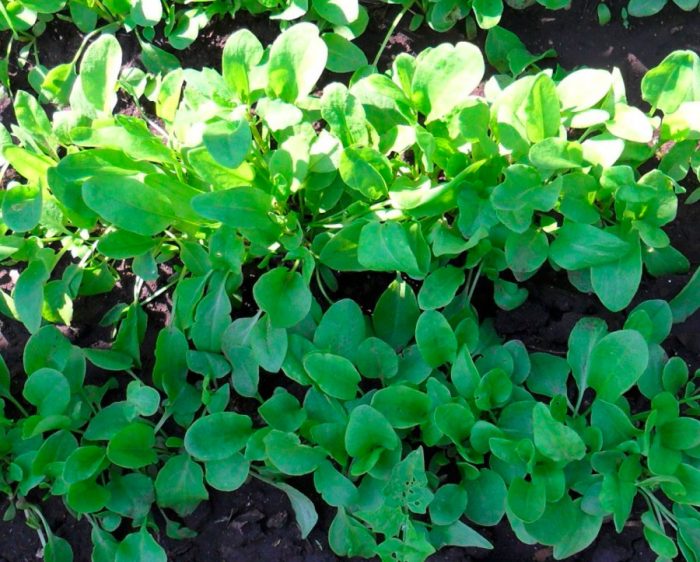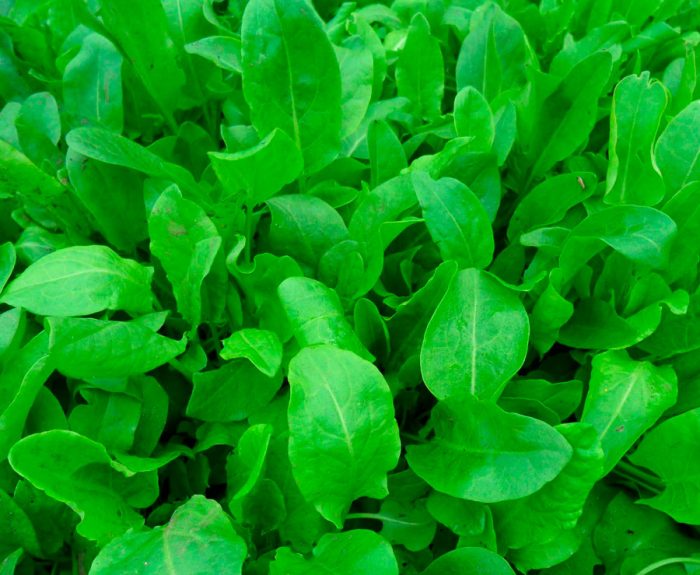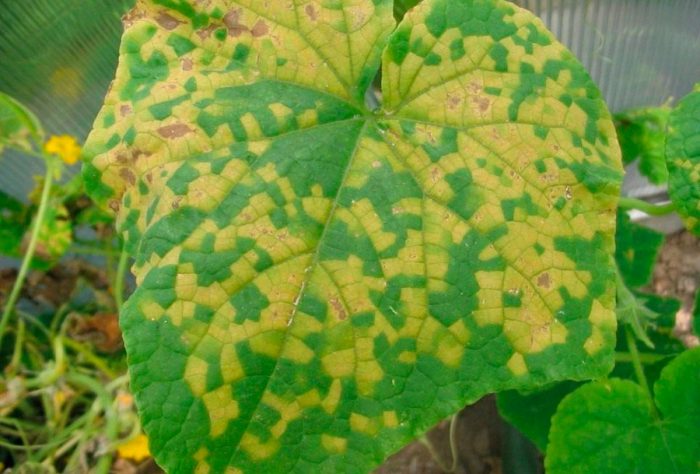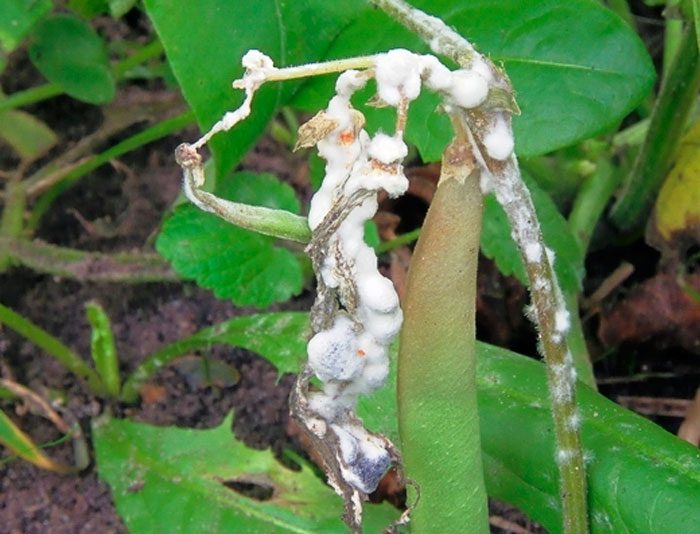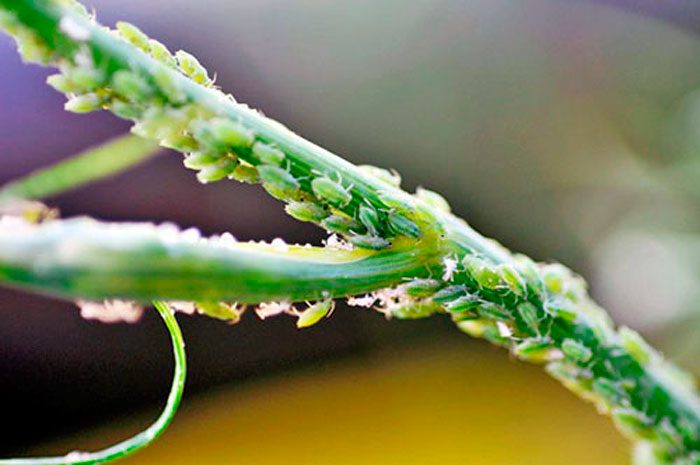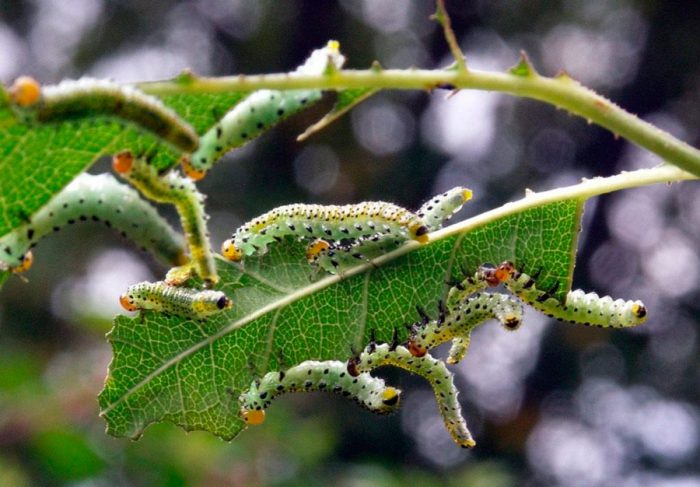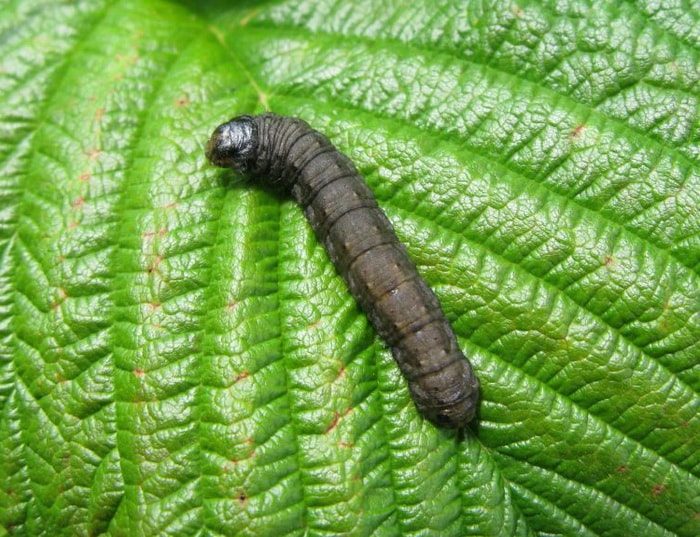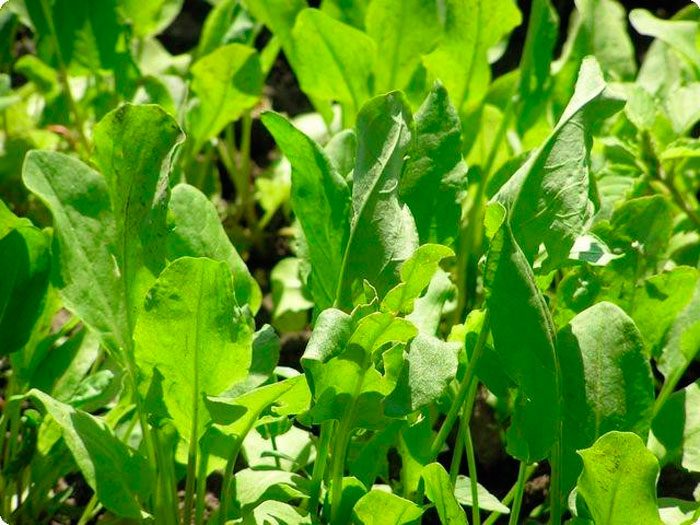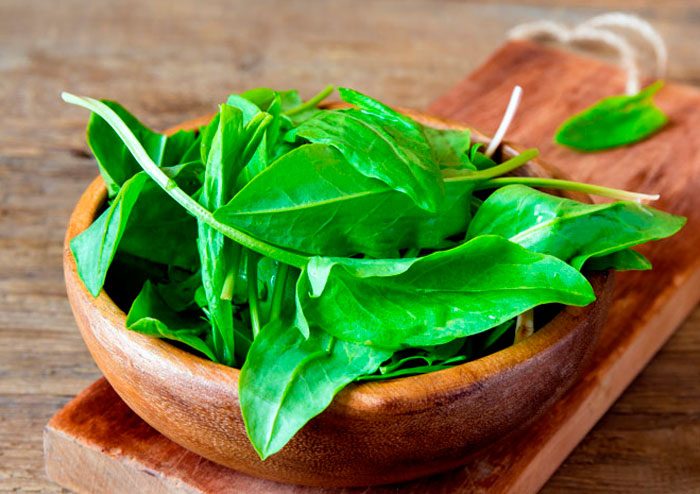Sorrel (Rumex) is a shrub or herb, which is an annual or perennial, it is a representative of the Buckwheat family. For this genus, the Russian name comes from the Proto-Slavic language, while it has the same root with the word "cabbage soup". At home, this culture is called sour, sour, sour, sour, sour, sour. Representatives of this genus can be found on various continents where there are at least some plants, however, the main areola of this culture covers the temperate latitudes of the Northern Hemisphere, namely: forest edges, ravine slopes, banks of swamps, lakes, rivers and meadows. Sorrel also grows like a weed not far from a person's dwelling, while it is unpretentious to the composition of the soil. This genus unites more than 150 species, however, the most popular is the type - sour sorrel or ordinary sorrel.
Content
Sorrel features
Sorrel is a herbaceous dioecious plant with a branched short tap root. The erect, ribbed stem is one meter in height, while at the base it is painted in dark purple color. At the top of the stem, there is a paniculate inflorescence. Entirely acidic basal leaf plates are long-petiolate and reach 15 to 20 centimeters in length. Their base is sagittal, while the median vein is pronounced. Almost sessile, alternately located stem leaf plates have an ovoid-oblong shape and a sagittal base. Polygamous cylindrical panicle inflorescences consist of pink or pale red flowers. Female and male flowers differ in structure. Bloom is observed in June and July. The fruit is a pointed smooth brownish-black achene, they reach 1.7 cm in length and have sharp edges and convex edges.
Growing sorrel in the open field
Sowing in open ground
In the same place, sorrel can be cultivated for 3-4 years, but if the transplant is not carried out on time, this will negatively affect the quality and yield of this plant.For sowing, select areas free of weeds, with moistened nutrient soil, while there should be no stagnation of water on them. The occurrence of groundwater at the site must be deep enough (at least 100 cm). Sorrel grows best in areas with slightly acidic loam or sandy loam, which are saturated with humus. Well-drained peat soil is also suitable for growing such a crop.
The site for planting should be prepared in the autumn, for this it is dug up to the depth of the shovel bayonet, while 20-30 grams of potassium chloride, 6-8 kilograms of compost or humus and 30-40 grams of superphosphate per 1 square meter are introduced into the soil ... At the beginning of the spring period, urea must be embedded in the ground (20 grams per 1 square meter of the plot), for this use a rake. Sowing of this culture can be carried out three times throughout the season, namely, in early spring, in summer and in autumn before winter.
In spring, sorrel should be sown immediately after soil cultivation, and the first crop will be harvested already this year. In summer, sowing seeds should be carried out in June-July when the harvest of lettuce, radish and green onions will be carried out. The seedlings that have appeared after the summer sowing will get stronger before the frosts begin, while sorrel will give a rich harvest with the onset of next spring. This crop is sown before winter in October or November. The plants that appear in the next season will give harvest in the spring.
Most often, gardeners sow sorrel in the spring, the fact is that at this time there is a lot of moisture in the soil, while seedlings appear and grow together. Bushes that have appeared after summer sowing need systematic watering. When sowing seeds before winter, very often seedlings appear shortly before the onset of frost, as a result, they die. For sowing sorrel, beds are used that reach 100 cm in width and 12 cm in height. The rows must be made across the length, while the distance between them should be about 25 centimeters. The seeds are buried into the ground by 10–20 mm, then the surface is tamped down, and the crops are watered.
Sorrel care in the garden
It is very easy to care for sorrel grown in open soil, while the surface of the rows should be systematically loosened, the bushes should also be watered, weeded, fed, and protected from harmful insects and diseases in a timely manner.
It is necessary to water sorrel on time, but if the bushes suffer from a lack of water, this will provoke an excessively early formation of peduncles, which has an extremely negative effect on the harvest. Peduncles must be cut off after their appearance. After the rain has passed or the bushes are watered, the surface between the rows should be loosened and weeds should be removed. The surface of the garden bed is covered with a layer of mulch (organic material), making it much easier to care for the bushes.
You need to feed the bushes twice or three times during the season. To do this, use a mullein solution (1: 6), and add 15 grams of potassium and the same amount of phosphorus fertilizer to 10 liters of such a nutrient mixture. In the second year, this culture will need to be fed with a solution of complete mineral fertilizer, while per 1 square meter of the plot, they take from 15 to 20 grams of urea, from 30 to 40 grams of superphosphate and from 15 to 20 grams of potassium chloride. It is necessary to feed the bushes with nitrogen-containing fertilizer every time after the leaves are cut off, while on a fine day it is introduced in the form of a solution.
Harvesting is carried out after 4 or 5 leaf plates of normal size grow on each bush. All weeds must be removed from the garden before harvesting. When the foliage is cut, the surface of the row spacings must be loosened with a hoe. It is necessary to cut the leaf plates at a height of 30–40 mm from the surface of the site, while trying not to injure the apical buds.From May to July, sorrel can be harvested 3 times. The last time the harvest is carried out no later than 30 days before the frost sets in, otherwise it will have an extremely negative effect on the future harvest. In autumn, the surface between the rows should be covered with compost or humus (for 1 square meter 4–5 kilograms), while the exposed roots should be sprinkled with them.


Watch this video on YouTube
Sorrel pests and diseases with photos and names
Sorrel diseases and their treatment
Downy mildew
In the first year of growth, the bushes can be affected by downy mildew (peronosporosis). In diseased bushes, the foliage becomes wrinkled, brittle and thickened, while its edge turns down. This disease develops most actively in wet weather. For the purpose of prevention, it is necessary to remove weeds from the site in time, while it is necessary to cut off diseased leaf plates in time. Diseased bushes should be sprayed with a Bordeaux mixture solution.
Gray rot
The development of gray rot occurs due to the thickening of the plantings at high humidity. On diseased bushes, burgundy specks form, gradually becoming watery and lethargic. Then the foliage begins to rot. For prevention purposes, do not allow thickening of the plantings, while the surface of the garden bed must be covered with a layer of mulch (peat).
Rust
Rust is quite common in temperate climates. In diseased bushes, bubbles of a pale yellow color form on the surface, over time they burst, and the spores of the fungus spill out of them. For preventive purposes, in the autumn, the site must be cleaned of plant residues, and then the soil is dug up. And in spring, the surface of the garden bed is covered with a layer of mulch (peat, sawdust or humus).
Various spots (septoria, ovularia, and others) are very difficult to distinguish between themselves. But if a bush gets sick with any of the spots, specks of various colors, shapes and outlines form on its surface. In this regard, as soon as specks appear on the foliage, it should be cut off and burned. For preventive purposes, in the autumn, it is necessary to remove plant residues from the surface of the site, and then the surface of the soil is covered with a layer of mulch (humus).
Sorrel pests and control
Most often, sorrel is harmed by such pests as: aphids, leaf beetles, sorrel sawflies, winter moths and wireworms.
Aphid
Aphids settle on a bush and suck out the juice from it, because of which the leaf plates turn yellow sluggish, the roots weaken, and the plants die. In order to get rid of such a harmful insect, it is necessary to use infusions of garlic, wood ash, burdock and tomato tops, while a small amount of liquid soap is poured into them.
If frequent holes appear on the surface of the foliage, then this indicates that leaf beetles have settled on the bush. Another such pest on the seamy surface of the leaf plates arranges egg-laying. In order to prevent the appearance of such a pest on the bushes, it is necessary to plant pyrethrum in the aisles of sorrel. From such a flower, you can still prepare an infusion with which the bushes are treated twice or three times during the season.
Sawfly
Sawflies also arrange their egg-laying on sorrel bushes, while the green caterpillars that appear gnaw at the foliage, after which only a skeleton of veins remains of it. For prevention purposes, it is necessary to remove weeds from the site in time. You also need to timely clean the area of plant residues, and treat the bushes with the infusion of pharmacy chamomile, into which liquid soap should be poured.
Winter scoop
In the garden, a winter scoop can settle in the last spring weeks, but such an insect can cause great harm to the sorrel.Throughout the summer period, it eats the foliage of the plant, and with the onset of autumn, such a pest moves closer to the soil surface. For the purpose of prevention, autumn digging of the site is mandatory.
In order to catch scoop butterflies in several places on the site, traps must be set; for this, containers filled with fermented liquid, for example: compote, honey water or molasses, are suspended at a meter height.
Wireworm
The wireworm is a larva of a click beetle, it injures both the root system of the plant and its foliage. For prevention purposes, all weeds must be removed from the site in a timely manner, excessively acidic soil must be neutralized, after harvesting, the site must be digged, and it should also be remembered that it is not recommended to grow this crop in the same place for more than 4 years.


Watch this video on YouTube
Types and varieties of sorrel
It was already mentioned above that the most popular type of sorrel among gardeners is sour sorrel, or ordinary sorrel. Also cultivated in the gardens are species such as: passerine sorrel (small, sorrel), water (water), horse (dense, horse oxalis, red moth), curly, seaside, dull-leaved, spinach and Russian. As a medicinal plant, horse sorrel is most often grown.
Horse sorrel (Rumex confertus)
Such a herbaceous perennial plant has a weakly branched, thick and short rhizome with many adventitious roots. Furrowed glabrous, erect, single stems branch at the top, their height can vary from 0.9 to 1.5 m, they reach 20 mm in thickness. Alternately located lower stem and rosette leaf plates have a heart-shaped base, and their shape is elongated-triangular-ovoid. The leaves are obtuse in the upper part, and their edge is wavy, they reach 25 centimeters long and 13 centimeters wide, their petioles are long and grooved on the upper side. The upper stem short-petiolate leaves, in contrast to the lower ones, are sharper and shorter, they have a lanceolate-ovoid shape. The seamy surface of the leaf plates has a dense pubescence represented by a hard, short pile. The greatest amount of pubescence is located on the veins of the leaf. Greens of this type have a non-acidic taste. Not very large whorls are composed of bisexual yellow-green flowers. Such whorls form a thyrsus, which is a lush, long and narrow paniculate inflorescence. This species blooms in May – June. The fruit is a brown nut, reaching about 0.7 cm in length and having a triangular oval shape. In nature, this species is found in the forest-steppe and steppe zones, while it prefers to grow on moderately moist and moist soil, it is considered a typical meadow weed.
Common sorrel or sour
A detailed description of this type is at the beginning of the article. The following varieties are most popular with gardeners:
- Broadleaf... This perennial is frost-resistant and has a high yield; it ripens in just 40–45 days. It is eaten fresh, and is also used to prepare winter preparations. Long-stemmed green leaf plates have an elongated oval shape.
- Malachite... The ripening period of such a medium early variety is from 40 to 45 days. The bright green foliage has a smooth or bubbly surface and a wavy edge; it reaches about 15 centimeters in length. The upright socket is loose.
- Spinach... The mid-early variety is resistant to frost and disease. A loose and large rosette consists of large leaf plates of a bright dark green color, the surface of which is bubbly.
- Large-leaved... This early variety is resistant to frost and shooting. The standing rosette consists of delicate greenish foliage.In length, leaf plates can reach 20 centimeters or even more. This variety ripens in 30–45 days.
- Bloody Mary... This decorative variety is frost-resistant and is widely used in cooking. The variety was so named due to the fact that there are blotches of red on the surface of the green foliage. The leaves are 15 centimeters long and 10 centimeters wide. Ripening time - 45-50 days.
- Odessa 17... Such an early high-yielding variety has dark green elongated leaf plates, their length is 16 centimeters, and their width is 7 centimeters, they are part of an upright loose rosette. This plant is used for making soups, salads, as well as for conservation.
- Nikolsky... The medium-ripening variety is distinguished by its yield. The raised loose rosette consists of green leaf plates that are about 38 centimeters long and up to 12 centimeters wide. It is used for fresh food, and is also used in the preparation of winter preparations.
- Sanguine... This medium-ripening perennial is distinguished by its yield. The semi-raised erect rosette is rather high, the stem is pale red. Large oval-oblong green leaf plates have a slightly bubbly or smooth surface, as well as red veins.
- Emerald King... An early variety with a high yield. Smooth, tender greenish leaf plates have an elongated oval shape.
- Champion... Such a perennial is decorative, has high taste and is a high-yielding plant. The height of the erect rosette is about 0.4 m, and in diameter it reaches up to 0.3 m. It consists of juicy green large leaf plates, the shape of which is oval-elongated.
- Emerald snow... The medium ripening variety has excellent taste and high yield. The sprawling raised rosette includes slightly bubbly, saturated green leaf plates of medium size.
- Maikop 10... This early variety is very popular among gardeners, it is resistant to diseases and frost, and has a good yield. The plant contains a moderate amount of acid. Fleshy large leaf plates are yellowish-green in color, the length of thick petioles is medium.
- Altaic... Such a frost-resistant variety has a lance-shaped foliage with a medium acid taste, its petioles are long and thin. Young foliage is colored dark green, after a while it develops a reddish tint.
- Lyons... The variety is of high quality and excellent taste. Fleshy leaf plates are on thick petioles. Once the greens are cut, they grow back very quickly. This variety is not resistant to frost and can freeze out in winter.
- Red veins... The height of such a decorative variety is about 0.4 m. The upright compact rosette consists of green leafy lance-shaped plates, while their veins are burgundy-red. In this variety, only young leaf plates are eaten before they become coarse.
Sorrel properties: benefits and harms
The healing properties of sorrel
Gardeners appreciate sorrel for the fact that it gives greens in spring, when the lack of vitamins is especially acute, and there are still too few fresh vegetables. The green part of plants contains proteins, carbohydrates, organic acids, fiber, vitamin C (ascorbic acid), E (tocopherol), A (beta-carotene), K (phylloquinone), H (biotin), PP (niacin) and vitamins group B: thiamine, riboflavin, pantothenic and folic acid, pyridoxine. Also, this culture is considered a source of potassium, calcium, magnesium, chlorine, sulfur, phosphorus, sodium, fluorine, copper, zinc, iron, manganese and iodine. The rhizome of horse sorrel contains vitamin K, essential oil, resins, iron, tannins, flavonoids, organic acids, such as coffee and oxalic acids, as well as other substances needed by the human body. Horse sorrel is very similar in composition to such a very useful plant as rhubarb.
Young foliage of such a culture is distinguished by the greatest nutritional value and benefits, while they contain citric and malic acid.Sour sorrel foliage has anesthetic, anti-inflammatory, fixing, wound healing, anti-scorbutic and antitoxic effect, and it also helps to improve digestion. For an upset stomach, use a decoction of the foliage. This drink has antiallergic and choleretic effect, improves liver function, and also eliminates itching and acne.
This plant is used for painful menstruation and during menopause. For this, 1 tbsp. freshly boiled water must be combined with 1 large spoonful of dry foliage. The drink should be infused for 60 minutes, after which it is drunk three times a day, a third of a glass in 30 minutes. before the meal.
In case of infertility, the following composition helps: 1 tbsp. freshly boiled water must be combined with 1 large spoonful of sorrel, the mixture is boiled for 60 seconds, and then it is removed from the heat and allowed to cool completely. They drink the remedy in the same way as for painful periods. To increase the effectiveness of the drink, add knotweed or mummy to it.
A decoction of common sorrel foliage is used to improve liver function, stimulate the formation of bile, and it can also stop bleeding. Means made on the basis of horse sorrel rhizomes are used for liver diseases, uterine and pulmonary bleeding, hemorrhoids, constipation, cracks in the anus, and also externally for burns, gingivitis, stomatitis, wounds and skin diseases. In alternative medicine, such sorrel is used as an antitumor agent. A decoction is prepared from the foliage of horse sorrel, which helps with colds, diarrhea, colitis, entero- and hemocolitis.


Watch this video on YouTube
Contraindications
Experts do not advise eating sour sorrel too much or for a long time, since it contains a lot of oxalic acid, and it can contribute to the disruption of the kidneys and mineral metabolism in the body. Also, this plant should not be eaten with stomach and duodenal ulcers, kidney diseases, gastritis with high acidity, gout and pregnant women.


